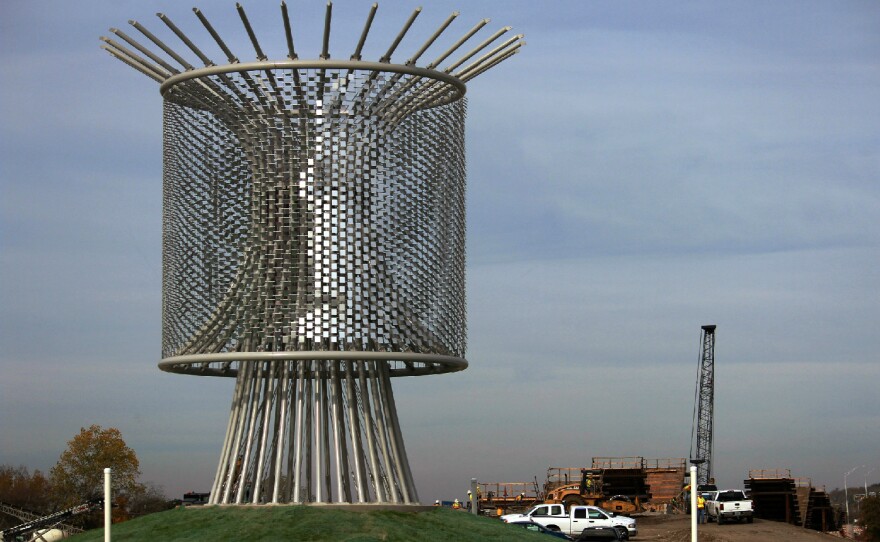A signature piece of public art was dedicated Thursday at the center of Fort Worth’s ambitious Trinity River redevelopment project just north of downtown.
A small brass band provided fanfare as people snapped photos in front of Wind Roundabout, the new kinetic sculpture at the intersection of Henderson Street and White Settlement Road on Panther Island.
The sculpture is an elevated silver cylinder made up of thousands of hinged aluminum plates that shift and shine in the breeze. The nearly $1 million project was paid for by a city program that allocates two percent of bond items to public art. California artist Ned Kahn designed the work as part of a series drawing attention to natural elements at play. Fort Worth Mayor Betsy Price is a fan.
“This public art piece that we’re about to dedicate is absolutely beautiful,” she said. “I could just sit and stare at it. I can’t wait to see it in the context of the rest of this project when it is finished.”
That project she’s talking about is massive – a nearly one billion dollar plan to transform a sprawling rundown industrial area with what will become a San Antonio-style river walk with housing, shopping, dining and entertainment, all on a newly created island between the Cultural District, the Stockyards and Downtown Fort Worth.
“Here we’re actually building a mile and a half bypass channel three hundred feet wide so several million cubic yards of dirt,” says JD Granger, who heads the Trinity River Vision Project.
When that channel is finished, it’ll make Panther Island an actual island. Granger says the decades-long project sprung from the fact that the growing city was increasingly at risk of flooding. Fort Worth grew by 277,000 people over the last 15 years.
“When a community grows, you have more concrete; more houses more roads more Walmarts more Home Depots, more Lowes,” he says. “With all that concrete the water hits the surface and runs directly into the stormwater system, the gutter. And that gutter then dumps all that water into the river.”
Granger says the vast majority of the levees in this 100 year flood plain can’t handle that much water. So the river’s being re-directed, and will get new levees, new locks and a new dam. There’ll also be three new bridges to go over the new channel. All of that’s phase one, which is expected to be done by 2024. Phase two would add 10-thousand new residential units, and space for retail and restaurants. That could start as early as next year.
Fort Worth City Councilwoman Ann Zadeh, an urban planner who represents the area, says it’ll be the kind of dense, urban cityscape people want – something different than the suburban sprawl North Texas is known for.
“It used to be that only planners sat around talking about these things but now adays you hear regular people talking about live-work-play,” she says. “Walkable neighborhoods, [are] the top thing that people are looking for where people want to live. They want to have the services available close by so they don’t have to get into their car for every single trip.”
That lifestyle, those amenities -- it’ll still be the better part of a decade before it’s all complete. Until then, folks can watch the wind play on a brand new sculpture, surrounded by construction equipment moving tons and tons of dirt.







